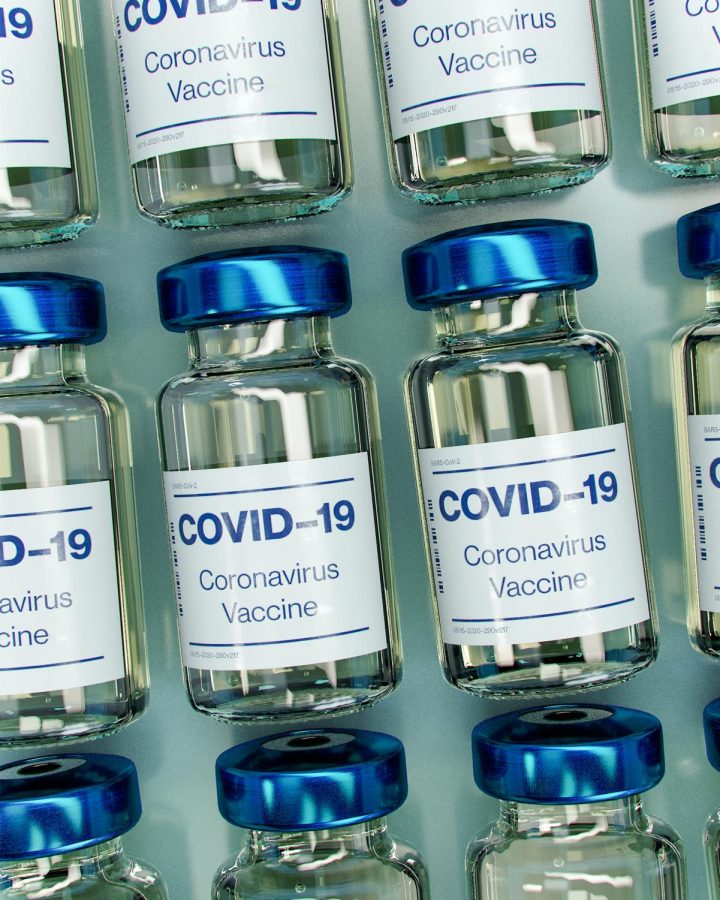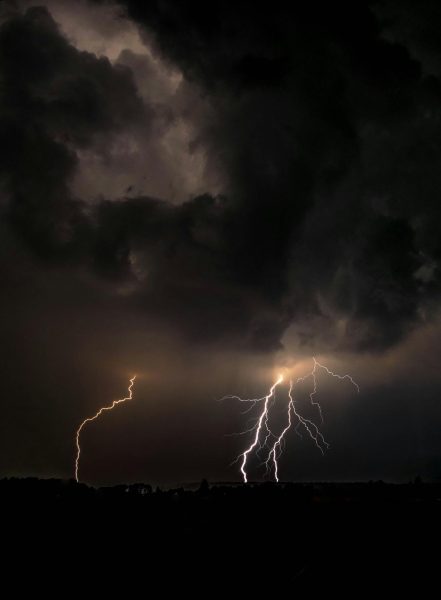Pfizer and Moderna Announce Effective COVID-19 Vaccines
Photo courtesy of Daniel Schludi on Unsplash.com
Photo courtesy of Daniel Schludi on Unsplash.com
November 19, 2020
On November 9, Pfizer and BioNTech revealed data from their Phase 3 vaccine trial which indicated that their mRNA-based COVID-19 vaccine is 90% effective. Less than a week later, Moderna released similar data indicating that their vaccine (also mRNA-based) is 94.5% effective. These percentages exceed the companies’ expectations for the effectiveness of their vaccines; for months, it was thought that COVID-19 vaccines might only be 50% effective.
The effectiveness of COVID-19 vaccines is calculated from a large-scale, double-blind study in which half of the participants are vaccinated with the experimental vaccine, and the other half receive a placebo vaccine. As soon as a certain number of participants fall ill, the status of the ill participants as vaccinated or unvaccinated is revealed and the vaccine effectiveness is calculated. In Pfizer and BioNTech’s case, 94 out of 44,000 participants fell ill as of November 8, and less than 9 of those were vaccinated.
Pfizer & BioNTech and Moderna both used a novel approach to manufacturing their vaccines. Instead of using an inactivated virus to stimulate an immune response in the patient, a portion of the viral sequence that encodes for one or more viral antigens is injected into the patient. The patient’s cells then translate this viral mRNA sequence into protein, which is detected by the patient’s immune system, generating an immune response and subsequent immunity.
These new COVID-19 vaccines put an optimistic twist on the grim state of the pandemic. “I’ve been in vaccine development for 35 years,” said William Gruber, Pfizer’s senior vice president of vaccine clinical research and development in an interview with STAT, “I’ve seen some really good things. This is extraordinary.” The CEO of BioNTech, Ugur Sahin, suggested that the vaccine could halve transmission of the virus and return life to “normal” by winter of 2021.
Currently, BioNTech’s goal is to deliver 300 million doses of the vaccine by April in an effort to immunize a critical part of the US population before the fall, and both Pfizer & BioNTech and Moderna aim to submit their vaccines to the FDA for emergency authorization within the coming weeks. However, despite the positive outlook that these vaccines bring to this global pandemic, prominent health officials have approached them with cautious optimism.
Because these vaccines are mRNA-based, they have to be stored at extremely cold temperatures. Pfizer’s vaccine requires storage at nearly -100 degrees Fahrenheit, a feat that demands specially built deep-freeze “suitcases” and ultra-cold storage trucks, which are not easily accessible to many hospitals in the US. This could complicate the distribution of the vaccine and result in wasted vaccine doses due to spoilage.
Storing the vaccine is just part of the problem. Due to the limited number of doses that will initially be available, vaccine distribution becomes a pressing issue: should vaccines be delivered to those most likely to contract a severe disease, or to those most likely to spread the disease, such as healthcare workers? Moreover, given the politicized climate surrounding a COVID-19 vaccine and concerns over the unprecedented speed of the vaccine development, how receptive will the general public be to a new COVID-19 vaccine? For a vaccine to be truly effective, it requires a high level of participation from the general public, which is becoming increasingly difficult as misinformation and political polarization undermine public health.
Despite these concerns, early data shows that the Pfizer & BioNTech and Moderna vaccines are no more dangerous than flu vaccines, and their side effects are likely similar to those of a common adult vaccine. For many, the race against COVID-19 is still too early to call, but the news of a COVID-19 vaccine is, at the very least, the first step back to normalcy.










